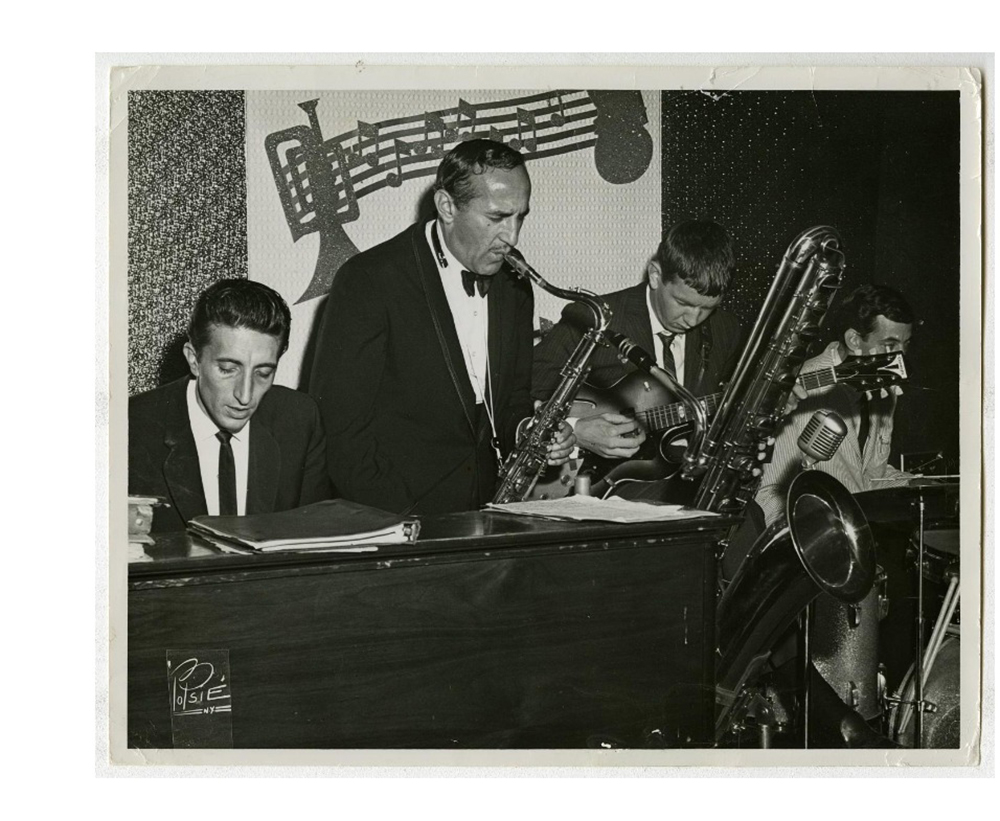By Bruce Klauber
Stan Kenton was an incredibly popular bandleader whose career spanned five decades. But if he is remembered at all today, it’s likely because he was the founder of what we now know as collegiate jazz education. Before Kenton instituted his in-school jazz clinics in the summer of 1959, a “jazz major” within an institution of higher learning didn’t exist. Today, almost 500 colleges and universities all over the world offer jazz studies programs.
When I was coming up as a fledgling drummer, there were only a few schools that offered jazz programs, but I was lucky enough to have the type of education that was not available in any school. Like many of those who came up around the time I did, I was informally mentored by older, experienced jazz performers. And some of those performers could certainly qualify, at least today, as jazz legends.
In my case, I was blessed to be mentored by a jazz icon who just happened to have close ties to Atlantic City and the Jersey Shore.
Long before crossover saxophonists like Grover Washington, Jr., Michael Pedicin, Hank Crawford, Boney James, and David Sanborn came on the jazz scene, there was Charlie Ventura. If the meaning of “crossover,” as applied to jazz, signifies an appeal to both jazz fans and non-jazz fans, then Ventura may have been the first, true crossover artist in jazz saxophone history.
Ventura’s time with drummer Gene Krupa, on and off from 1944 until Krupa’s passing in 1973 – and he appeared frequently with Gene at the Steel Pier in those years – helped catapult him to stardom. And a star he was.

He won virtually every jazz magazine poll in existence as “best tenor saxophonist” and “best small group” leader in the late 1940s, by way of his ground-breaking “Bop for the People” combo.
That group, which made stars out of singing duo Jackie Cain and Roy Kral, drummer Ed Shaughnessy and several others, combined the wordless vocals of Jackie and Roy with the instrumental ensemble to fashion an irresistible and refreshing sound that managed to appeal to jazz and non-jazz audiences.
His name and his following as a player, as a showman, and as a personality, was so big that in 1950 he received top billing over drummer Buddy Rich in the famed “Big Four” quartet which also featured pianist Marty Napoleon and bassist Chubby Jackson.
All that fame led to Ventura opening his own club in Lindenwald. Charlie Ventura’s Open House opened in the early 1950s. People of a certain age still remember the Open House today. Over the years, in addition to his performances at the Steel Pier, he played a number of nightspots in Atlantic City, including Elaine’s Lounge at the old Golden Nugget, as well as in Somers Point and Wildwood.
I came upon his playing around 1960, when I heard a recording of the Gene Krupa Trio’s rendition of “Dark Eyes,” recorded in 1945. Ventura’s soloing on that song – which he continued to play until the end of his career – blew me away. Right then I knew what my mission was: Somehow, I had to play drums with this guy.
His star may have dimmed through the years as jazz evolved, but Ventura always worked, always drew a crowd, and he was always the focal point of wherever he appeared. As late as 1957, he won the Playboy Magazine Jazz Poll along with Stan Getz.
I saw a possibility of realizing my dream when Ventura returned to Philadelphia in 1970 after a long stint in Las Vegas. One afternoon, he was appearing on Jerry Blavat’s afternoon television show, “The Discophonic Scene.” Because the station broadcasting the program, WFIL (now WPVI) was reasonably close to where I lived, I hightailed it over to the station on my bicycle in hopes of meeting Ventura.
He was just leaving when I cornered him. I told him that I was a drummer who loved his playing. He invited me to come and hear him at a Center City joint called the Saxony East where he was accompanied by organist Count Lewis (aka Lewis DePasquale), and ex-Harry James drummer Tony DeNicola. Though I wasn’t old enough to drink and certainly didn’t have enough funds to eat there often, I nevertheless went to the Saxony to hear him, virtually every night for six months. He knew I wanted to sit in, but it never happened.
Then one afternoon I came home after school only to be told by my mother that a man named Count Lewis called and that I was to call him back as soon as possible. Count Lewis from the Saxony with Charlie? I had no idea what he could have wanted, nor did my mother, who only wanted to know, “Who is this Count Lewis?”
Count told me that drummer Tony DeNicola had been in a car accident and that Charlie needed a drummer for several weeks and wanted me to play. I couldn’t believe it, especially since Charlie Ventura had never heard me play. No matter. A few hours later, I gathered my dark suit and my drums and headed down to the Saxony East. I was scared to death.
What I didn’t know was that my mother had been spreading the word about my impending appearance with Charlie Ventura that night. Charlie was still quite the big deal in Philadelphia then, and my family turned out in droves that night. There must have been 20 of them.
The only direction Charlie gave me happened just before we went on. “You know what to do, Bruce,” he said. “Start with the brushes and pick up the sticks when I get heavy.” I got through the night, with his only criticism being that I tended to slow the tempo at times, but he added, “That’s what happens when you’re nervous.”
There would be many other nights like that at the Saxony East and elsewhere with Charlie Ventura. Along the way, other than music, he taught me a lot. He was very clear about the dangers of drugs and drink, especially because he saw firsthand how they destroyed jazz legends like Charlie Parker. He taught me how to deal with an audience and how to respect an audience, how to present myself on a bandstand, why a positive attitude is so essential, how to interact with the audience, and how important it was to continue to study and grow as a musician. These were lessons about music and lessons about life that I heard every night for months. I never forgot what he taught me, and I put what I learned from him in place each time I perform.
Charlie heard me in later years and remarked how proud he was that I had improved so much since that tentative time at the Saxony East. What I also learned from this great, great man was that I was not the only youngster he mentored over the years. I was in good company, with the likes of guitarist Billy Bean, pianist Johnny Coates, Jr., bassist Richard Davis, trumpeter Conte Candoli, and many others.
My friend and my mentor Charlie Ventura spent his final days at the home of Lewis DePasquale in Pleasantville. He died in 1992 at the age of 75. Since Charlie’s passing, I’ve been in touch with his daughter, Rita Lenderman, who has been nice enough and interested enough to keep up with my musical and non-musical activities. She recently told me something that means a great deal to me: “My dad would be proud of you.” I’ll be thinking of that, and everything else Charlie Ventura taught me, whenever I perform.
Bruce Klauber is the author of four books, an award-winning music journalist, concert and record producer and publicist, producer of the Warner Brothers and Hudson Music “Jazz Legends” film series, and performs both as a drummer and vocalist.








